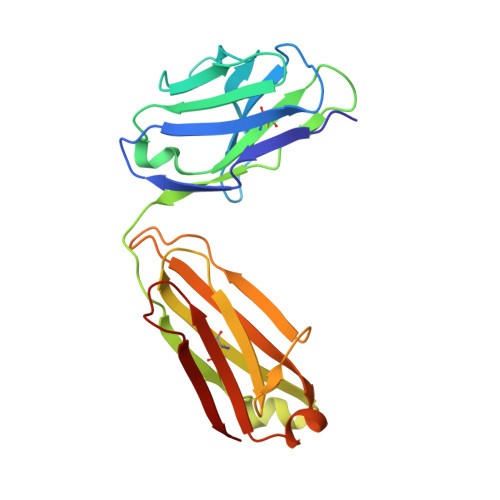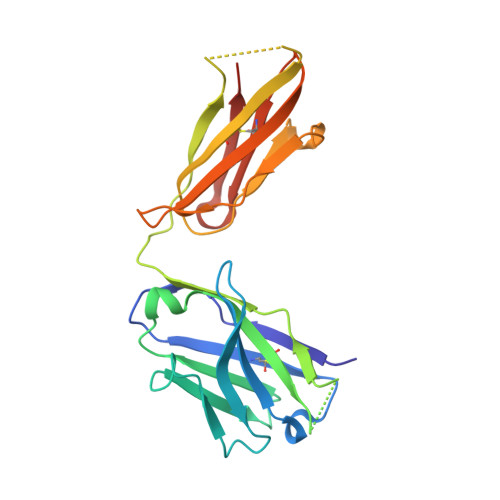Structure-based engineering to restore high affinity binding of an isoform-selective anti-TGF beta 1 antibody.
Lord, D.M., Bird, J.J., Honey, D.M., Best, A., Park, A., Wei, R.R., Qiu, H.(2018) MAbs 10: 444-452
- PubMed: 29333938
- DOI: https://doi.org/10.1080/19420862.2018.1426421
- Primary Citation of Related Structures:
6AMJ, 6AMM, 6ANP, 6AO0 - PubMed Abstract:
Metelimumab (CAT192) is a human IgG4 monoclonal antibody developed as a TGFβ1-specific antagonist. It was tested in clinical trials for the treatment of scleroderma but later terminated due to lack of efficacy. Subsequent characterization of CAT192 indicated that its TGFβ1 binding affinity was reduced by ∼50-fold upon conversion from the parental single-chain variable fragment (scFv) to IgG4. We hypothesized this result was due to decreased conformational flexibility of the IgG that could be altered via engineering. Therefore, we designed insertion mutants in the elbow region and screened for binding and potency. Our results indicated that increasing the elbow region linker length in each chain successfully restored the isoform-specific and high affinity binding of CAT192 to TGFβ1. The crystal structure of the high binding affinity mutant displays large conformational rearrangements of the variable domains compared to the wild-type antigen-binding fragment (Fab) and the low binding affinity mutants. Insertion of two glycines in both the heavy and light chain elbow regions provided sufficient flexibility for the variable domains to extend further apart than the wild-type Fab, and allow the CDR3s to make additional interactions not seen in the wild-type Fab structure. These interactions coupled with the dramatic conformational changes provide a possible explanation of how the scFv and elbow-engineered Fabs bind TGFβ1 with high affinity. This study demonstrates the benefits of re-examining both structure and function when converting scFv to IgG molecules, and highlights the potential of structure-based engineering to produce fully functional antibodies.
Organizational Affiliation:
a Biologics Research, Sanofi , Framingham , MA , USA.

















